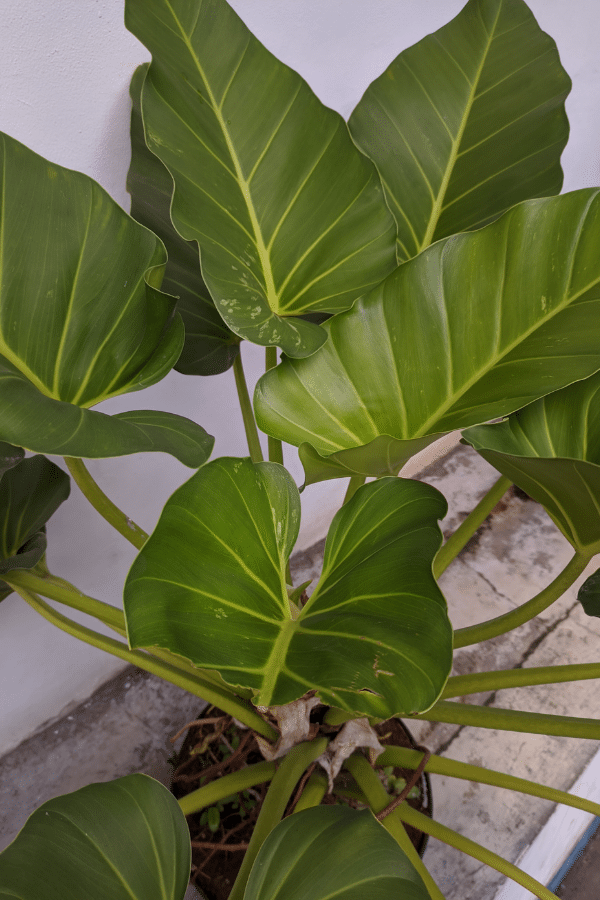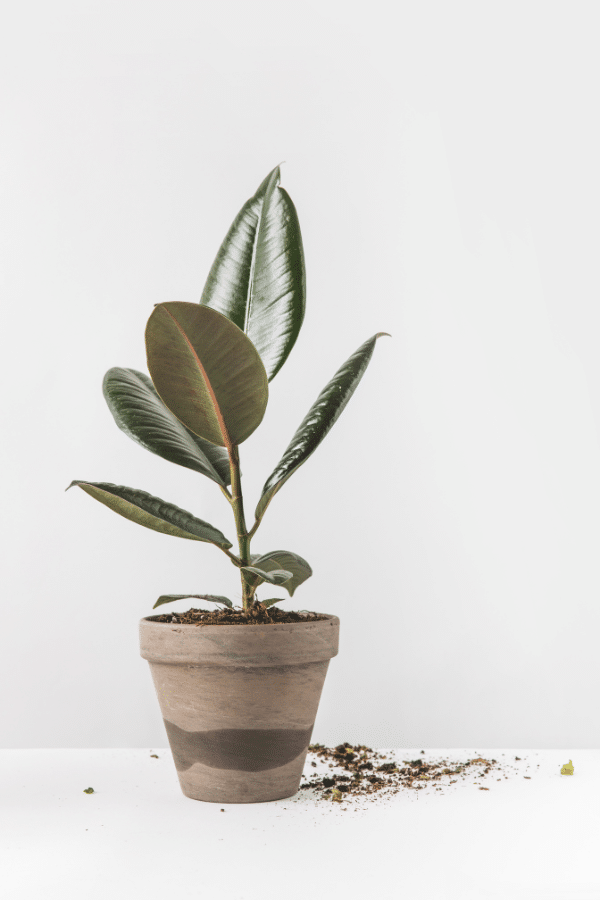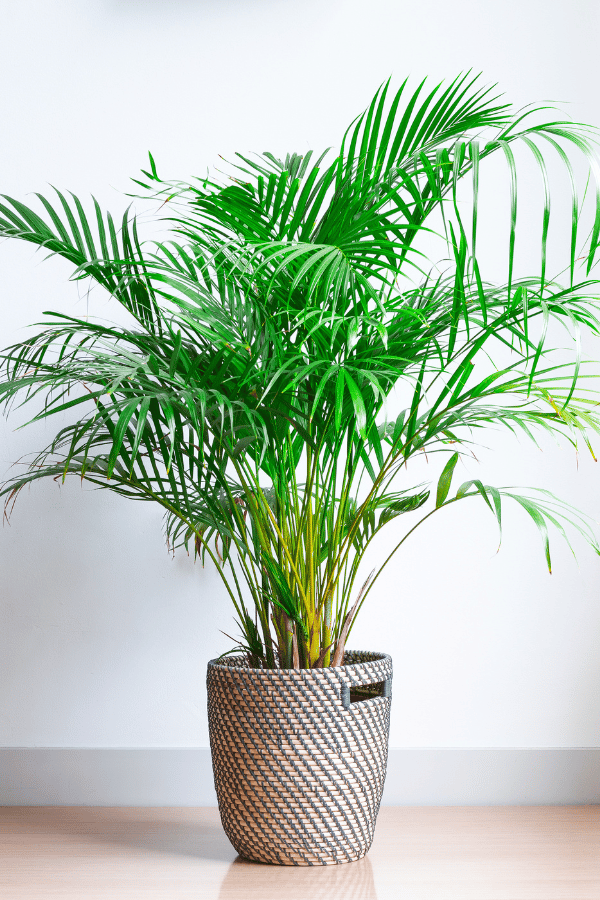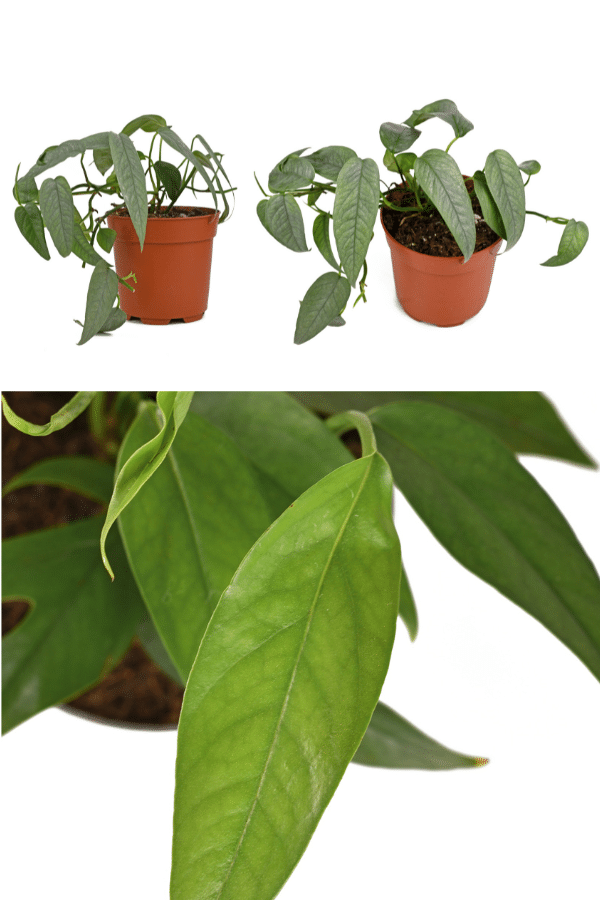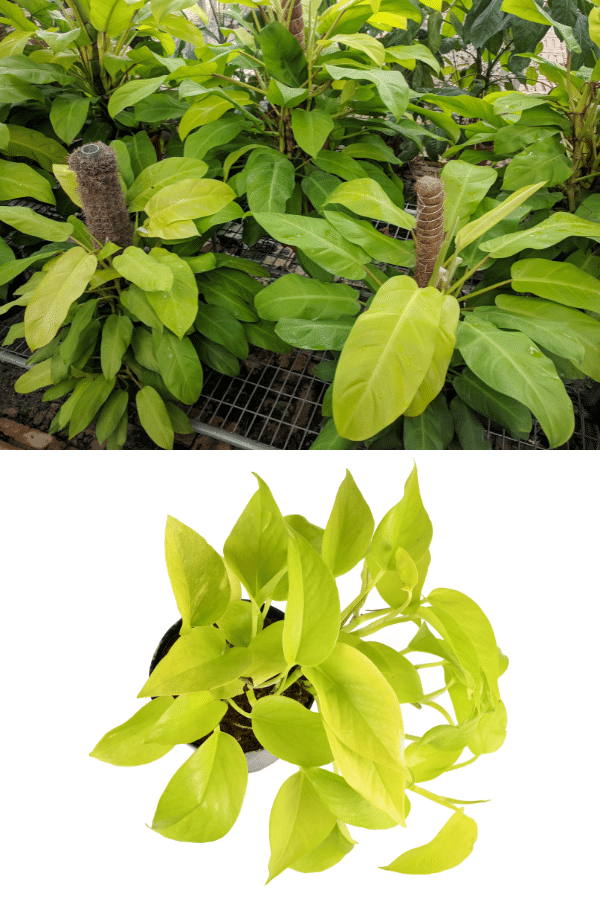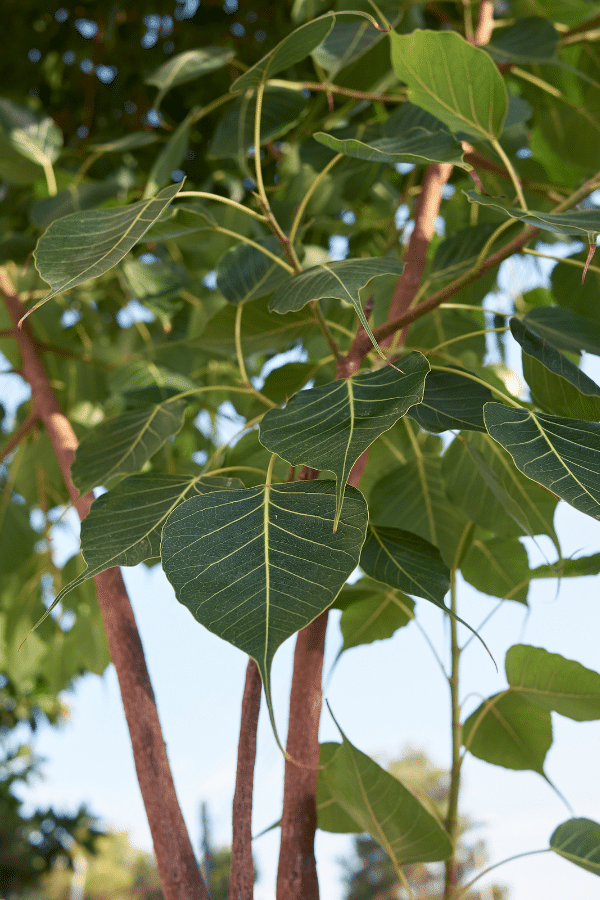How Often to Water Pothos
General Overview of Watering for Pothos
When it comes to watering pothos, there are a few key things to keep in mind. First, it is important to make sure that the soil stays moist at all times, but not too wet or soggy. This can be accomplished through consistent and even watering, as long as excess water is promptly drained away. Ideally, watering should be done using a sprayer or other fine misting tool, as this will help prevent over-saturation and air bubbles around the roots. And finally, it is also essential to avoid allowing the soil to dry out completely between waterings, as this can cause stress on the plant and lead to weak leaves and decreased growth.
Overall, proper watering for pothos is essential for maintaining healthy plant life.
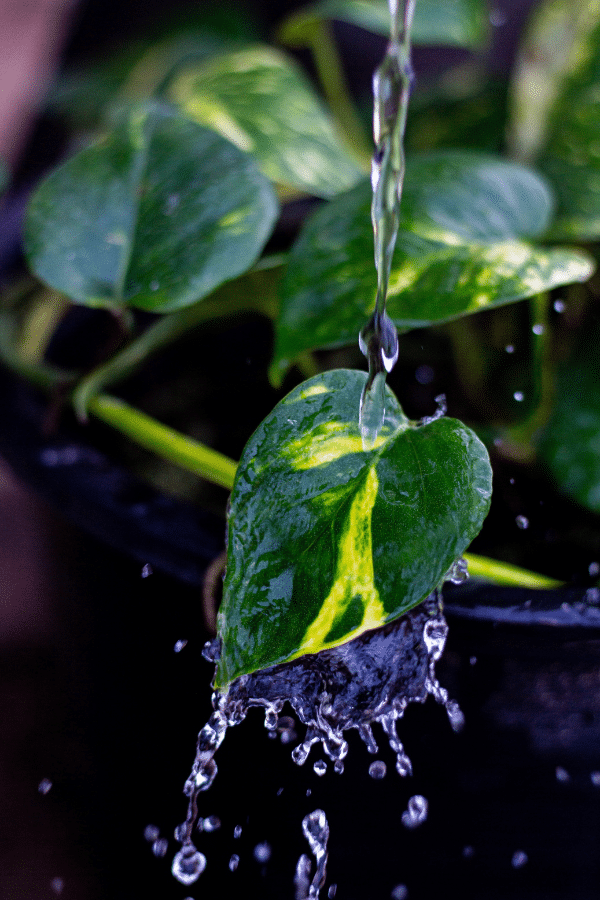
How to Water Pothos
What Type of Water To Use
When it comes to the type of water to use for your pothos plant, there are a few different options available to you. For example, some like to use distilled water, as this can help prevent mineral buildup in the soil and promote healthy growth. Alternatively, you may also opt for regular tap water if your area has good water quality. Be sure to let tap water sit out overnight to get rid of the chemicals found in water, like chlorine.
When watering, it’s a good opportunity to use a water soluble fertilizer to give your plant a healthy dose of essential micro and macronutrients. Overall, there are many different factors that can affect the health of your pothos, so ultimately the most important thing is to find what works best for you and your unique growing conditions. Whether you choose distilled water or regular tap water, the key is to be consistent in your watering schedule and adjust accordingly as needed.
Top Watering Techniques
There are many different watering techniques that can be used to care for pothos plants. One popular approach is to increase humidity around the plant by placing it on top of a tray of wet pebbles or misting it daily with a spray bottle. This will help the plant to retain moisture, reducing the need for frequent watering.
Another option is to apply water more generously when foliage begins to droop, as this often indicates that a significant amount of moisture has been drawn up into the leaves already. No matter which watering technique you choose, however, it is important to make sure that the soil never appears completely dry before adding more water. With these top tips in mind, you can ensure that your pothos stays healthy and vibrant for years to come!
Bottom Watering Technique
The bottom watering technique is a time-tested method for delivering water directly to the roots of plants. This technique works by placing the plant in the pot in a container of standing water. In this technique, the water will be absorbed through the bottom of the pot through the drainage holes. By saturating the surrounding soil through this method, it becomes easier for plant roots to access the nutrients and water that they need to thrive. Additionally, bottom watering techniques can also help to reduce evaporation and keep plants more consistently hydrated, even in times of extreme heat and drought.
Whether used for indoor or outdoor plants, this technique offers a simple yet effective way to maximize plant growth and efficiency. The bottom watering technique is also better for the control of fungus gnats, as you are essentially watering the roots directly versus watering the top soil where the gnat larvae lives.
Common Watering Mistakes
When it comes to keeping your pothos plant (epipremnum aureum) healthy and thriving, there are a number of common watering mistakes that you should try to avoid. For example, if you overwater your pothos, you can quickly cause root rot, which can be fatal for the plant. Additionally, extremely short or sporadic watering sessions can lead to wilting leaves and slowed growth, while excessive watering will only encourage fungal growth on the leaves or soil.
To get the most out of your pothos and protect it from these common watering errors, it is important to carefully monitor the moisture level of the soil and water as needed. Whether you need more or less water will depend on a variety of factors, including soil quality, lighting conditions, temperature levels, and container size. With proper monitoring and care, however, you can help ensure that your pothos thrives for years to come.
Pot Size When Determining When To Water
When determining the optimal time to water your potted plants, there are a few things to consider. First, it is important to take note of the pothos’s type and growing conditions. For example, if the plant prefers partial shade or low-light conditions, then you should be cautious about overwatering it. Likewise, if your pothos is located in an area with high humidity and warm temperatures, then you may need to water it more often due to the high temperature drying out the soi lfaster. Additionally, pay attention to any signs of wilting or yellowing leaves, as these can be indicators that your pothos needs more water. Overall, by being mindful of both the pothos’s individual needs as well as its broader environment, you can help ensure that your potted plants get all the care they need.
Factors in Determining When to Water
Pot Type
There are three types of pots that are commonly used for pothos plants, glazed ceramic, plastic, and terracotta or clay. Each type of pot has its own benefits and drawbacks. Plastic pots are lightweight and inexpensive. They retain moisture well, which is good for pothos plants that like to be kept on the drier side. However, plastic pots can become brittle and crack over time. Terracotta pots are heavier and more expensive than plastic pots. They do not retain moisture as well as plastic pots, but they provide the best drainage a pot can provide. Clay pots also last longer than plastic pots. Then, there’s glazed ceramic pots, which holds onto a ton of water and it takes a lot more time to allow the water to drain from the pot when watering.
When it comes to watering your pothos plant, the type of pot you are using will determine how often you need to water it. If you are using a plastic pot, you will need to water your pothos plant every week or two. If you are using a clay pot, you will need to water your pothos more so than any other pot type. If you’re using a glazed ceramic pot, you are going to need to water your pothos less so than any other pot type. Always check the soil before watering your pothos plant. If the soil is dry, then it is time to water your plant.
Pot Size
Pot size is a crucial factor when it comes to watering pothos plants. Generally speaking, pothos do best in smaller pots, as this allows the soil to retain water for longer. In addition, pothos are relatively drought-tolerant, meaning that they can survive for some time without being watered. However, pot size does impact how frequently pothos need to be watered, and how much water they will absorb from each irrigation. By monitoring pot size and checking the soil moisture regularly, gardeners can ensure that their pothos remain healthy and vibrant for years to come.
Type of Soil
When someone is trying to determine when to water potted plants, one of the most important factors to consider is the type of potting mix used. Depending on the texture and composition of the soil, the plants may need different amounts and frequencies of watering in order to thrive. For example, a soil that has a high clay content is likely to retain moisture for longer periods of time and will require less frequent watering. On the other hand, fine-grained soils made up largely of silt may dry out more quickly, meaning they will need more frequent watering.
Ultimately, anyone who wants to keep potted plants healthy should be aware of their soil type and adjust accordingly when it comes time to water. Whether by feeling the soil with your fingers or using special tools like moisture meters, you can help your pothos flourish for years to come.
Type of Light
In order to determine the best time to water a pothos, it is important to consider the type of light that the plant receives. If pothos are grown in a bright location that receives sunlight for most of the day, they will need more water than potted pothos that receive less intense light or remain in dark, shaded areas for long periods of time.
In general, potted pothos that receive a sufficient amount of sun should be watered when the soil is dry to the touch, while potted pothos that spend more time in darker areas will need to be watered less frequently. Avoid direct sunlight which is too much light for pothos. Alternatively, be sure to give enough light to variegated pothos, such as marble queen pothos or other pothos with lots of variegation. By carefully considering the light conditions of potted pothos, it is possible to strike an effective balance between watering and maintaining vibrant plant growth.
Temperature
When it comes to caring for potted plants, one of the most important factors to consider is temperature. Each plant has different temperature preferences, and as a result, different potted plants may need different watering schedules. Generally speaking, potted plants with low light requirements tend to require more water in warmer temperatures and less water in cooler temperatures. On the other hand, plants that need plenty of sunlight typically need more frequent watering regardless of temperature. Ultimately, the best way to determine when to water your potted plants is by assessing their individual temperature needs. Whether they prefer cool or warm air, all potted plants will benefit from regular maintenance and care. So don’t be afraid to get your hands dirty – keeping your potted plants healthy is well within your reach!
Humidity
When it comes to determining when to water your potted plants, humidity levels can be a crucial factor. High levels of humidity can cause water droplets to form on the leaves and stems of potted plants, which can cut off their access to nutrients and lead to plant death in extreme cases. As such, it is important to monitor your potted plants for signs of too high of humidity and adjust your watering schedule accordingly. Common indicators of high humidity include droplets forming on the surface of pothos plants, as well as condensation forming inside of pots. By paying attention to these symptoms and monitoring your pothos plants closely, you can ensure that they are getting the moisture that they need without becoming over-saturated. With a little bit of knowledge and diligence, keeping potted plants healthy in humid conditions is an achievable goal.
When to Water
Watering in Summer
As a general rule of thumb, pothos plants will need to be watered more frequently in spring and summer than in winter. In addition, pothos plants need ample sunlight during the summer months in order to stay healthy and vibrant. As such, pothos would like to be watered in the morning if possible, so the plant can absorb the water throughout the day and use it when it is getting sunlight. When done properly, pothos watering in summer can be a great way to ensure that your plants look their best all season long!
Watering in Winter
When it comes to pothos watering in the winter months, there are a few important things to keep in mind. First, pothos plants tend to do best when their soil is kept just slightly moist, so it’s important to ensure that you’re not overwatering your pothos over the winter. Additionally, pothos plants are generally hardy and can tolerate lower temperatures, so you don’t need to worry about keeping your pothos indoors over the winter. Instead, if you want to be extra cautious with pothos watering during the winter season, water less frequently than you would in the summertime. With a little bit of careful monitoring and these simple tips on pothos watering, you can keep your potted pothos healthy all year long!
Watering Pothos Propagations
Devil’s Ivy are one of the easiest houseplants to propagate! Place the stem cuttings into water or perlite for weeks to root. Once roots have developed and are at least two inches in length, you can plant these pothos vines in soil if you choose. Baby potted pothos specimens can easily dry out if left unattended, and it is important to give them regular doses of water in order to keep them healthy. At the same time, pothos specimens that are overwatered can be susceptible to root rot, a fatal condition that often results from letting plants sit in soggy soil for too long. Investing in a moisture meter will help to tell you when to water your pothos propagations.
Signs of Overwatering & How to Fix
When it comes to pothos plants, one of the biggest challenges is determining if you are overwatering them and if so, what can be done to fix it. One of the most common signs of pothos overwatering is a general decline in plant health that can manifest as discolored or drooping leaves, stunted growth, or the appearance of mold or mildew on the leaves.
To stop giving your plant too much water and address existing issues, it is important to use a well-draining potting soil that include a mixture of peat moss, perlite, and orchid bark. Additionally, you can try decreasing the frequency of watering your pothos or keep the potting medium slightly drier than normal between waterings. Ultimately, maintaining optimal pothos care takes practice, but taking these simple steps can go a long way towards ensuring that your pothos plant remains happy and healthy!
Signs of Underwatering & How to Fix
One of the main signs of pothos underwatering is drooping leaves. If you notice your pothos looking limp and wilted, it may be a sign that your plant needs more water. To address pothos underwatering, look at your watering habits and watering frequency. Ensure that it stays moist, but not overly wet.
Additionally, you can increase humidity levels around your pothos by misting the plant with a spray bottle or placing the pot on top of a wet towel. With proper care, pothos can thrive in even the most low-light conditions and make an attractive addition to your home or office space.

